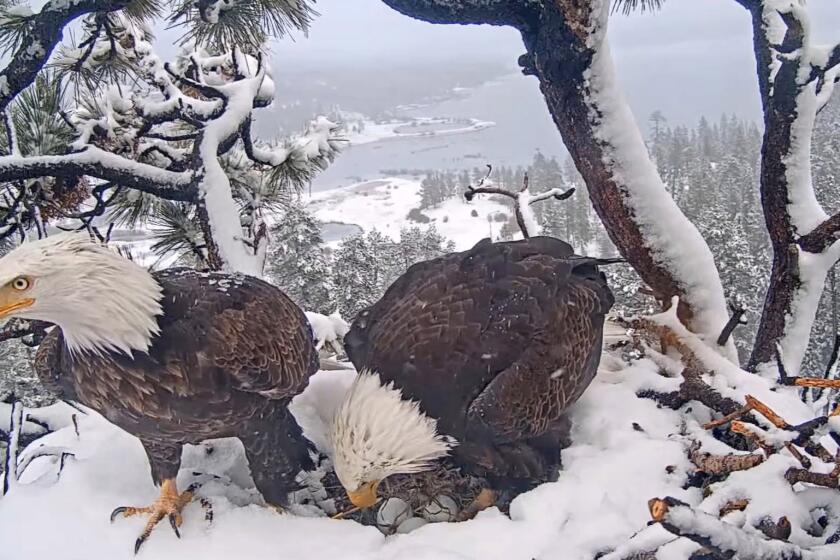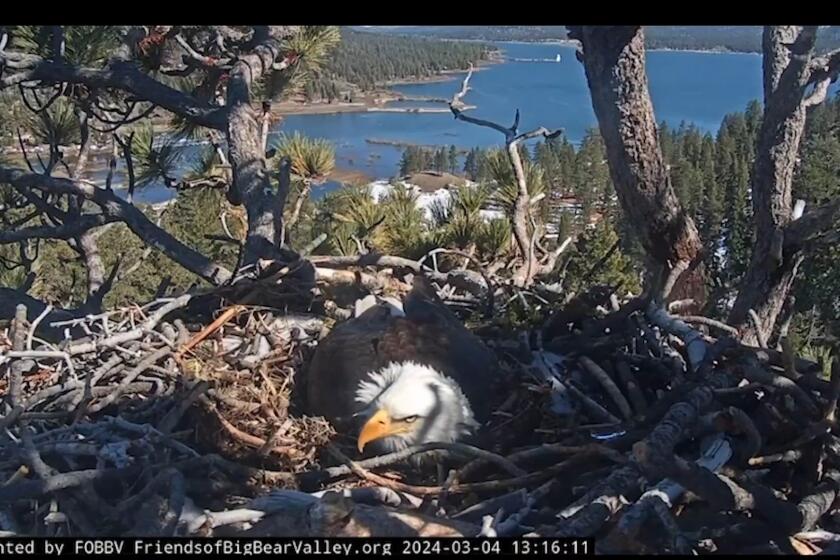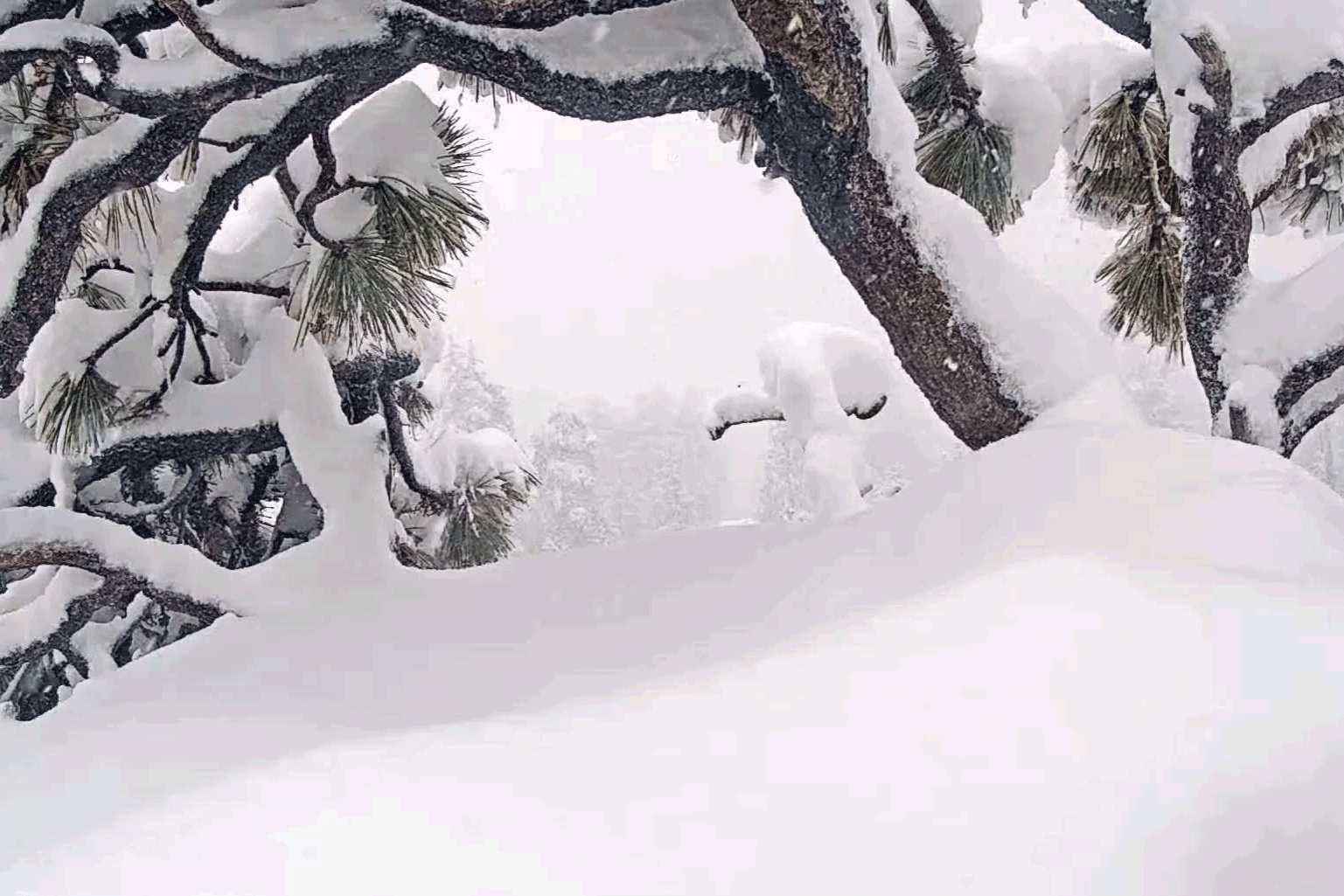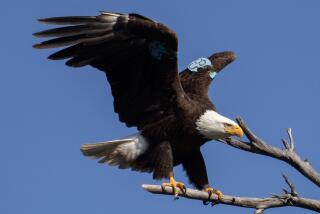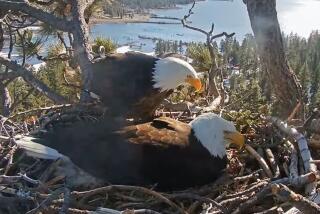Big Bear bald eagles’ three eggs probably won’t hatch: ‘Makes my heart hurt’
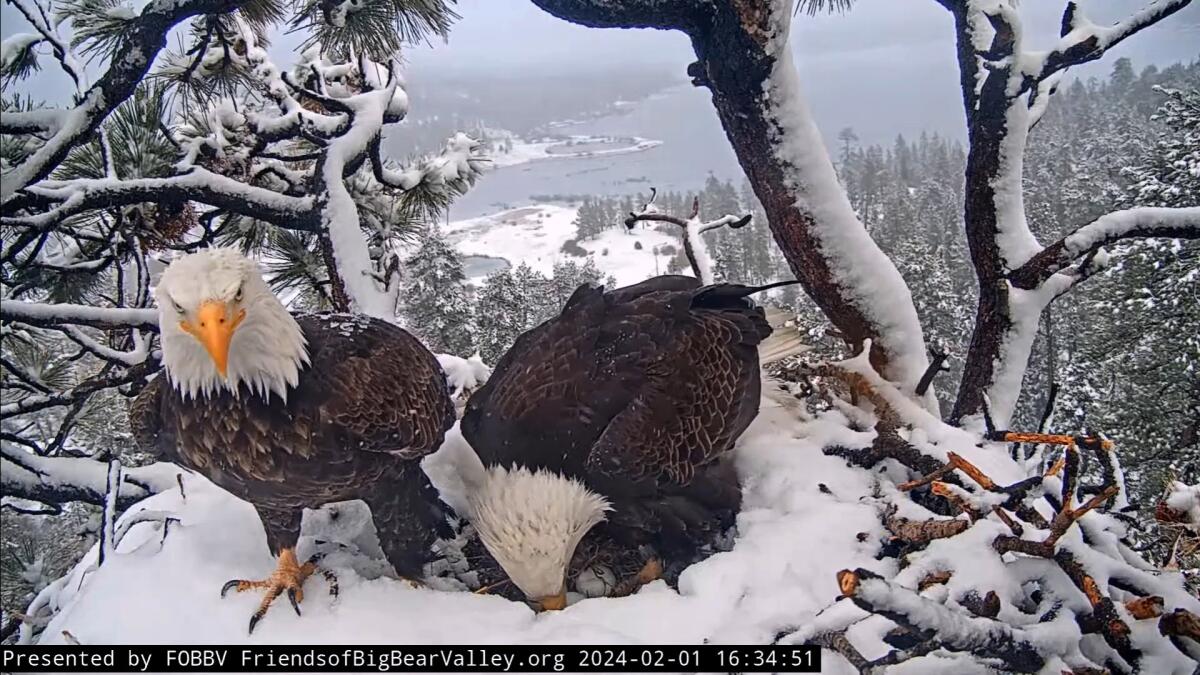
Sandy Steers knew that heartache was possible — for herself and for the nearly 40,000 viewers of the live cam monitoring Big Bear bald eagles Jackie and Shadow.
There was rejoicing among fans when the longtime avian couple welcomed three eggs — a rarity among bald eagles and a first for 12-year-old Jackie.
But it now appears that the trio of eggs are not viable. The executive director of Friends of Big Bear Valley, which operates the webcam, says she’s always tried to maintain a practical point of view. This is nature, after all.
Devoted viewers of the live webcam trained on the nest of Big Bear eagles Jackie and Shadow watched as the longtime couple recently welcomed three eggs — a first.
“Doesn’t make it any easier, though,” she told The Times on Tuesday. “I feel very connected to Jackie and Shadow, so it’s very sad for me. Makes my heart hurt.”
Pip watch — when viewers keep an eye out for cracks made in the shells of the eggs as chicks work their way out — began on Feb. 29. That was the 35th day after the first egg was laid.
Steers had expected Day 38 or 39 to be when pipping might occur. But enough time has passed that it’s clear the eggs probably won’t hatch.
Jackie and Shadow will continue to guard the nest, she said, until they begin to leave it unattended for longer periods of time.
When asked for possible reasons why the eggs are not viable, she noted, “We’re actually the highest [Big Bear] nest that has an eagle cam on it. So the altitude, the low percentage of oxygen, could make a difference.”
There’s also the fact that recent storms brought very cold temperatures. Jackie recently spent 62 hours straight on the nest in an attempt to keep the eggs warm, sometimes buried beneath snow.
Big Bear bald eagle Shadow executed a perfect ‘wing slap’ as a raven swooped in — placing a 6-foot-wide lid over the nest holding his and partner Jackie’s precious three eggs.
Humidity levels also can be a factor, Steers said: “Eggshells are porous so whatever is happening in the environment is getting into the eggs.”
But “there are all sorts of reasons,” she said, “and sadly we can’t know what they are.”
The webcam saw its highest number of viewers this year. During pip watch, the number reached 37,000, according to Steers. Last year’s high topped out at 22,000. She chalks up the extra interest to Jackie’s 62-hour vigil as well as the rare three-egg clutch.
Only about 50% of bald eagle eggs hatch. And the uncertain nature of parenthood for Jackie and Shadow has been evident over the years. Since the webcam was installed in 2015, only three chicks have fledged — and that’s normal, the biologist said.
“It’s hard work being an eagle.”
The severe storm that lashed Southern California last week led bald eagle Jackie to hunker down for 62 hours straight to protect her nest.
Steers noted that Jackie and 10-year-old Shadow have many years ahead of them: “Eagles have been known to live in the wild for 39 years ... so, they’re young,” she said, and there probably will be many more eggs. “Eagles don’t stop laying eggs anytime before they die. They stay fertile and producing up until the end.”
Viewers who have invested time and emotion into Jackie and Shadow’s saga can learn from them, Steers said.
She recalled watching Shadow react when the couple’s eggs didn’t hatch in a previous year and were taken by ravens. “He stood there, staring,” she said. For a couple of days his behavior changed and he appeared subdued. Then he rebounded, she said, and showed signs of being his usual mischievous self.
The birds “are extremely resilient and strong. ... I like to think they’re teaching people resilience and to take things as they come.”
More to Read
Sign up for Essential California
The most important California stories and recommendations in your inbox every morning.
You may occasionally receive promotional content from the Los Angeles Times.
